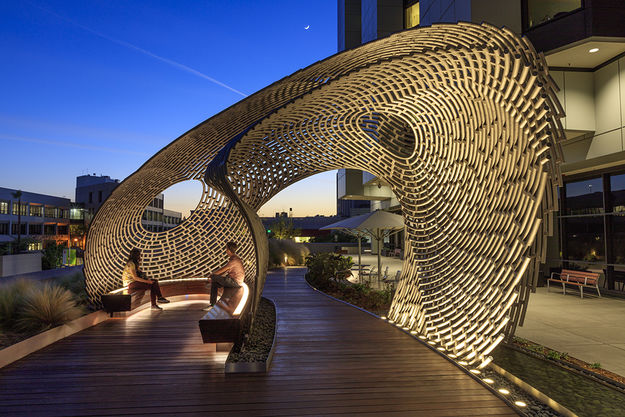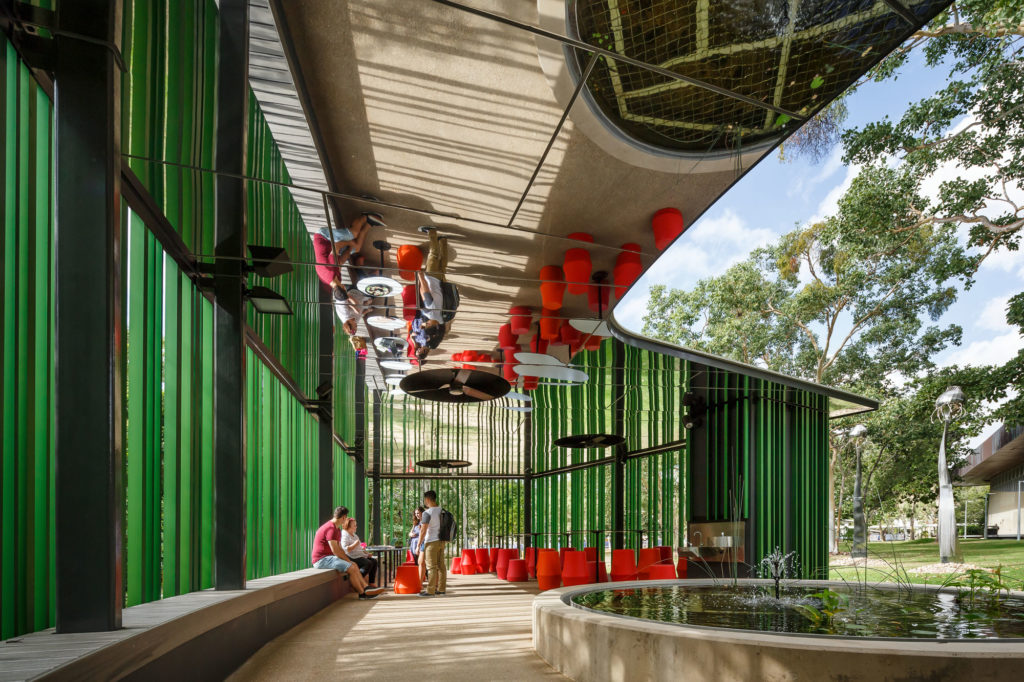Reposted with permission from the BSB Design, No BS Blog
Intentional design should be focused through the belief that space is inextricably tied to use, place, and social custom.” – Mark Mitchell
On February 13th and 14th, professionals in the student housing industry came together for NAA’s Campus Connex event covering student housing amenity trends. The event included a panel of four: Chris Coleman from American Campus Communities; Robin Connolly from The University of Texas System; Brian Ward with NILES Bolton Associates, and BSB Design’s Mark Mitchell.
Mark, BSB’s Market Leader in Commercial and Hospitality Design, offered insight about the amenity trends that are up and coming and how he stays ahead of the game when it comes to design. Here are five aspects Mark utilizes to impact student housing amenities:
1. Redefining walls
Student housing is ever-changing and the walls should be, too. It’s the ideas of flexibility and transparency that allows the architecture to adapt over time. A wall doesn’t need to be just a straight and true wall locked down to one use, but might rather be playful and expressive of the interior style or of the exterior landscape. A partition can serve much more purpose than simply separating rooms, but also affect sound, light, color and form. Utilizing roll-up doors, horizontal bi-folds, walls that turn or can “disappear” to create transparency to the outdoors are some ways to make sure the space is as flexible as a student’s lifestyle is. The walls can be used to physically hang things up for collaboration or as a projection screen for a movie night or gaming marathon. A wall can also become architecture as art and engage the resident as new and creative forms.

Copyright 2017 Ball Nogues
2. Collaboration is all the rage
While the standard quiet ‘study’ space is crucial, creating spaces that allow for gathering, meeting and collaboration is critical in student housing. Oftentimes, students work alongside each other and their professors, and the space they live in must be accommodating to this work style. Utilizing furnishings that are functional with USB plugins, yet mobile, will help bring flexibility to the space. Modular furniture that can be moved into a large group for collaboration, separated into smaller or individual configurations, or stored out of the way is ideal to make a space accommodating to a variety of uses. Providing ‘maker’ spaces can elementally provide a creative outlet and at the same time become a help-meet in relation to educational engagement.
3. Enhancing the sweat lifestyle
Fitness and exercise rooms don’t need to be simply a room full of equipment anymore. These spaces can be adapted for individual or group workout sessions with the right design. By employing mobile furnishings, they can be easily stored away to make space for the active lifestyle at any time. Consider new avenues of fitness, such as urban CrossFit, parkour, areal yoga, or outdoor activities such as rope courses, slack line areas and bouldering landscape features. Structural lawns can be a place to engage groups for yoga, tai chi or Pilates in a fresh environment.

Copyright 2017 Andrew Rankin
4. Hello Gen Z
We’re no longer designing student housing for millennials. Researching and understanding Generation Z’s and the next generation Alpha is critical to mastering cutting-edge student housing trends. They are growing up with smartphones in their hands, and they will know and understand things beyond the reach of many, putting them in a completely different realm of digital engagement. The goal is to create a space that capitalizes on the energizing and engaging students where they will live and thrive. Understanding a generation that has proven to have a strong work ethic balanced with a larger concern for the community is tantamount to designing a creative community that they can call home.

Copyright 2014 Habjan Design
5. Life in color
Color, or the lack of, has been proven to have a profound effect on how a space is used and perceived. With the criterion that student housing is more than just a place to sleep and party, while not in class, we should not miss an opportunity to visually capture the ethos of the locality and spirit of the university. The concept of ownership by the resident can be strengthened through use of art and style which bespeaks local artists and embraces a story that the design is based on. Color and architectural graphics can be both a driving force as well as a calming cogency.
—BSB Design, a national full-service architecture and design firm headquartered in Des Moines, Iowa, that strives to stay ahead of the curve, not only in student housing, but in every sector of their expertise

